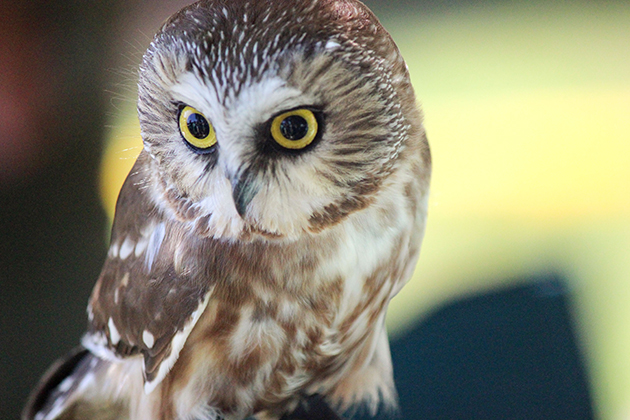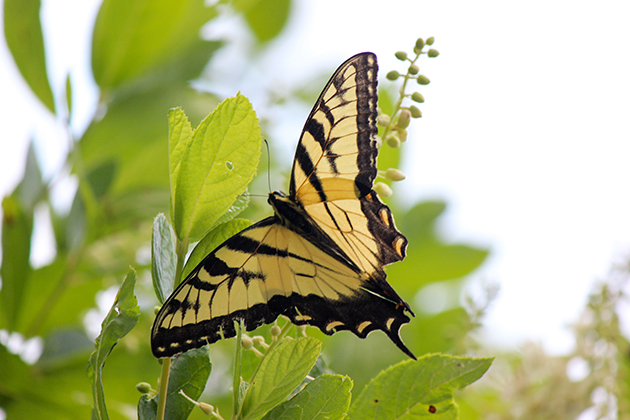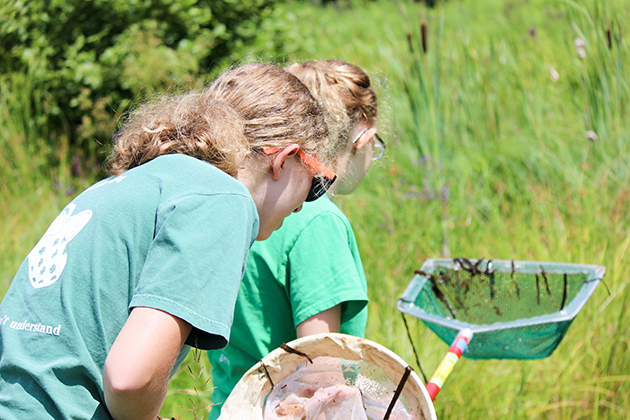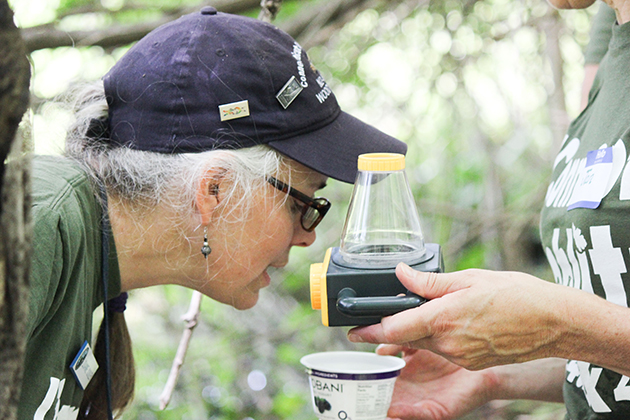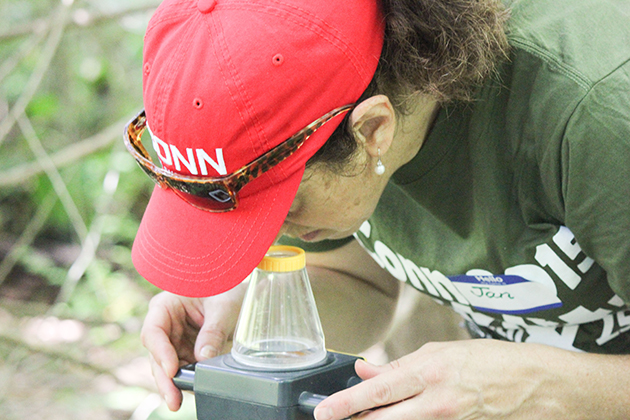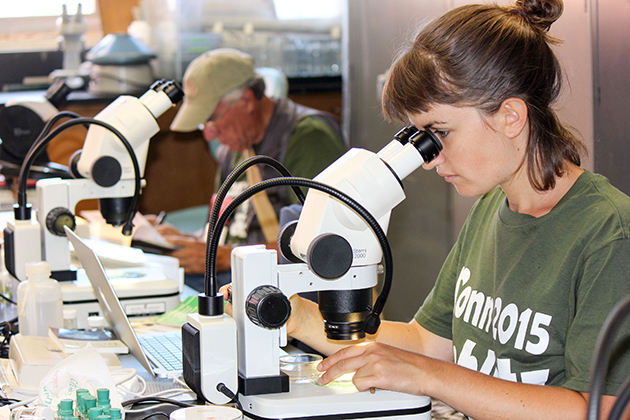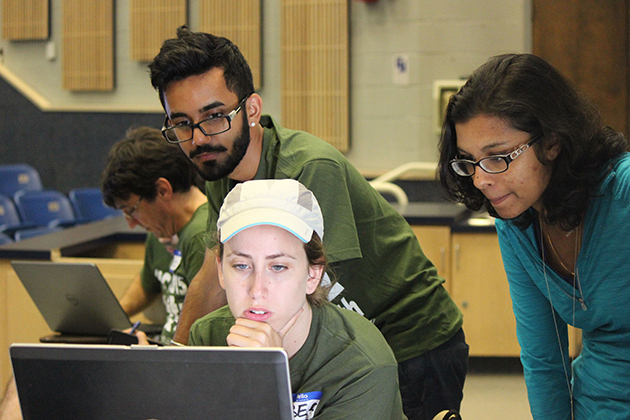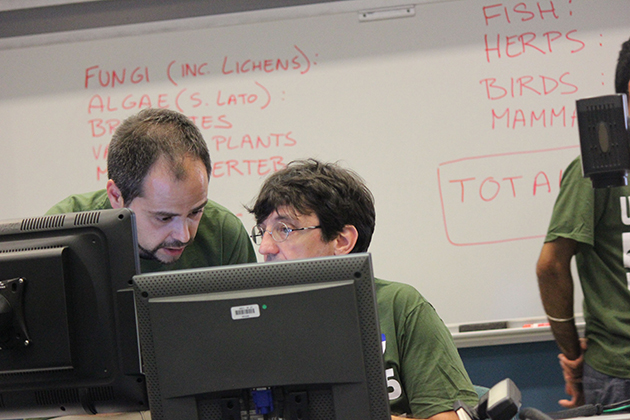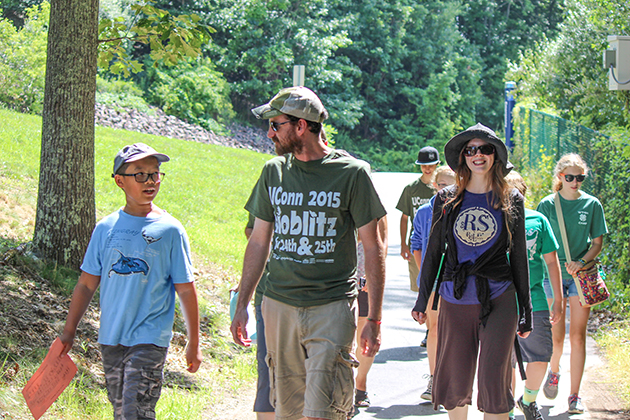
During a 24-hour survey of biodiversity on and around the Storrs campus, UConn scientists and the public tallied nearly 1,200 species.
Species count (1,181 total):
Algae 91
Birds 80
Bryophytes (such as moss) 42
Fish 6
Fungi, including lichens 147
Herps (reptiles, amphibians) 20
Invertebrates 43
Insects 222
Mammals 24
Spiders 46
Vascular plants (trees, flowers) 460
And that’s not counting the more than 6,000 species of microbes (microscopic bacteria and single cell organisms called archaea) collected and identified by scientists using DNA sequencing during a concurrent activity.
Sponsored by graduate students in the Department of Ecology and Evolutionary Biology, BioBlitz 2015 engaged dozens of nature lovers and future scientists in a world that goes largely unnoticed by many, but one that is teeming with life if you know where to look.
“[The BioBlitz] is a race against time to record as many species as possible,” said Uzay Sezen, postdoctoral fellow in ecology and evolutionary biology, and one of the organizers of the event.
Over a period of 24 hours, beginning 4 p.m., Friday and concluding the following afternoon, those with a keen eye and an ear attuned to the call of the wild were invited to observe everything from tadpoles to white-tailed deer to insects, ferns, and fungi.
Visitors were able to watch professional scientists as they identified and categorized flora and fauna; and children ages 10 and over took part in a Science Exposé that involved supervised collections in the Hillside Environmental Education Park near North Campus.
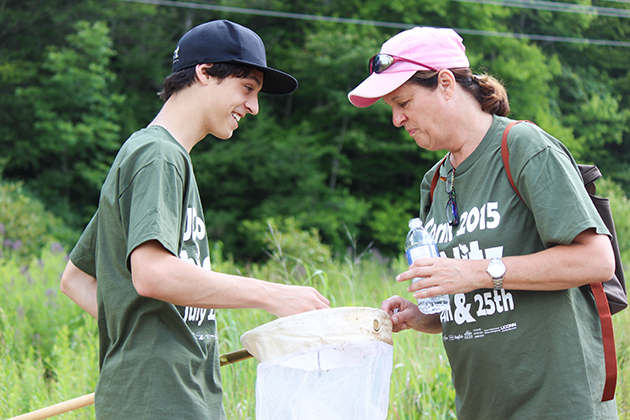
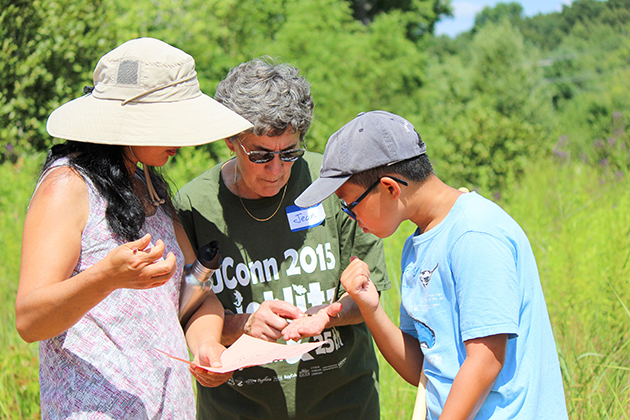
People from as far away as Manchester, Vt. and as close as Mansfield Center, Conn. explored fields and wetlands, forests and ponds, and participated in activities such as a nature photography walk, a moonlit ‘owl prowl’ near the Fenton River, and a stroll through the UConn Forest.
Amanda Caskenette, a post-doctoral fellow in ecology and evolutionary biology and one of the event organizers, said one of the goals of the Science Exposé was to get children interested in the natural world and ultimately inspire some of them to pursue careers in science.
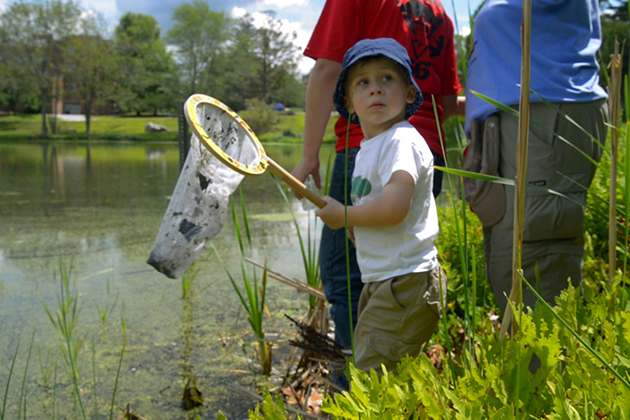
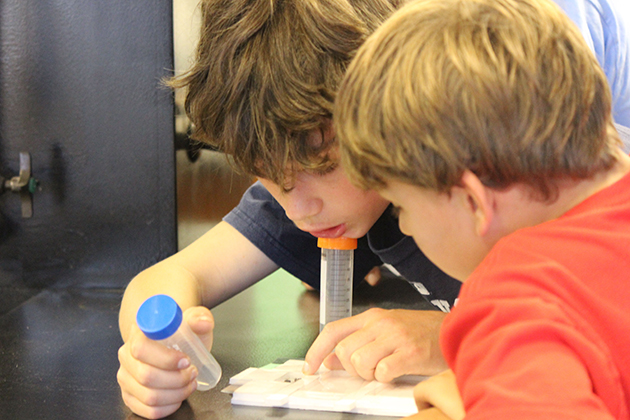
“We think it’s important that kids ask ‘why?’ and not just accept what they see at face value. We want them to think about why a particular species is present, what makes a good environment, and why a particular species may either decline or increase in numbers,” she said. “This part of BioBlitz is a little different from what has been done in the past, and it’s a great way to get kids involved in science while they’re having fun.”
On the lower end of the attendees’ age range, four-year-old Declan from Mansfield announced to his mother that he ‘loves science’ – and that’s what BioBlitz is really all about.
